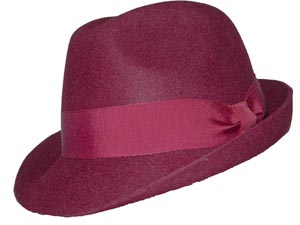- Messages
- 13,319
- Location
- California native living in Arizona.
In an argument about the difference between a Fedora and a Trilby someone had this to say:
"Originally, both words were the names of the female leads in 19th century plays. Supposedly, both characters wore similar hats and the names of the characters came to be used to describe those hats, but for some reason "fedora" caught on in the US and "trilby" caught on in the states. [I write "supposedly" because I've seen some early 20th c. ads that described stiff brim hats, which I would normally consider homburgs as "fedora-style". The sample is too small, however, to make any sort of causation argument, rather than that the advertisers were mistaken.] Trilby doesn't show up in US sources until post-WWII, when globalization is starting to kick in. So, as lapels and hat brim sizes start to shrink, Americans are introduced to the British term for what is essentially the same hat, but is generally taken to refer to the new style. Meanwhile, on the other side of the pond, use of the word "fedora" really doesn't become prevalent until around the time that Nutter was introducting wider lapels and brims.
At least, that's my hypothesis. It's largely based on anecdotes and playing around with ngram on Google, accounting for geography, of course. So far, I haven't seen much to disprove it, beyond the usual correlation isn't causation stuff."
What do you guys have to say?
"Originally, both words were the names of the female leads in 19th century plays. Supposedly, both characters wore similar hats and the names of the characters came to be used to describe those hats, but for some reason "fedora" caught on in the US and "trilby" caught on in the states. [I write "supposedly" because I've seen some early 20th c. ads that described stiff brim hats, which I would normally consider homburgs as "fedora-style". The sample is too small, however, to make any sort of causation argument, rather than that the advertisers were mistaken.] Trilby doesn't show up in US sources until post-WWII, when globalization is starting to kick in. So, as lapels and hat brim sizes start to shrink, Americans are introduced to the British term for what is essentially the same hat, but is generally taken to refer to the new style. Meanwhile, on the other side of the pond, use of the word "fedora" really doesn't become prevalent until around the time that Nutter was introducting wider lapels and brims.
At least, that's my hypothesis. It's largely based on anecdotes and playing around with ngram on Google, accounting for geography, of course. So far, I haven't seen much to disprove it, beyond the usual correlation isn't causation stuff."
What do you guys have to say?





